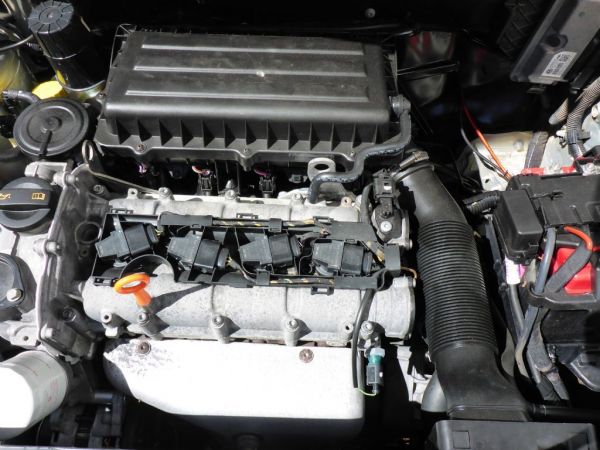Upgrade a state-of-the-art clp engine for better performance.
How a Clp Engine Can Improve Performance in Different Industries
The arrival of CLP engines notes a significant shift in functional performance throughout numerous fields, driven by their capability to optimize gas intake and decrease downtime. As companies progressively prioritize sustainability alongside performance, the role of CLP engines comes to be even much more vital.
Summary of CLP Engines
CLP engines, or Continual Liquid Propellant engines, represent a substantial development in propulsion innovation, particularly for room applications. These engines make use of a constant feed system that allows for the sustained expulsion of propellant, leading to improved effectiveness and performance compared to conventional solid or hybrid propulsion systems. By maintaining a continuous flow of fluid propellant, CLP engines can achieve much more precise thrust control, which is essential for navigating spacecraft in numerous objective scenarios.
The style of CLP engines incorporates innovative materials and ingenious gas monitoring systems. clp engine. This causes decreased weight and boosted dependability, crucial elements for long-duration space objectives. The constant procedure minimizes the threat of combustion instability, an usual difficulty in conventional rocket engines.

Benefits in Manufacturing
The production of Constant Fluid Propellant (CLP) engines provides numerous significant benefits that boost both efficiency and cost-effectiveness. Among the key benefits is the streamlined production process, which decreases the intricacy related to standard propulsion systems. By making use of fluid propellant, suppliers can accomplish better precision in engine efficiency, bring about maximized power outcome and minimized waste.
In addition, CLP engines assist in a greater degree of modularity, permitting much easier combination into various production lines. This versatility can substantially decrease preparations and enhance total operational adaptability. Making use of CLP technology additionally tends to lessen the requirement for extensive maintenance due to fewer moving components, which translates into lowered downtime and functional expenses.

Applications in Logistics
Leveraging Continuous Liquid Propellant (CLP) engines in logistics offers considerable benefits in operational efficiency and integrity. These engines offer a robust solution for numerous transportation needs, allowing the seamless activity of goods throughout large distances. The intrinsic layout of CLP engines enables for consistent power output, which equates right into smoother and more predictable transport schedules.
One of the essential applications of CLP engines in logistics remains in sturdy freight transportation, where they can drive both ground and airborne lorries. Their ability to keep high efficiency under differing tons problems ensures that distribution timelines are fulfilled, consequently enhancing client satisfaction. Additionally, CLP engines can be integrated right into automated logistics systems, assisting in real-time tracking and optimizing route preparation.
Moreover, the toughness of CLP engines lowers upkeep downtime, allowing logistics firms to maximize their functional abilities. This is specifically valuable in warehousing procedures, where efficiency in managing and delivering goods is essential. As logistics continues to progress, the combination of CLP engines represents a forward-thinking approach that not only enhances performance however likewise supports the market's expanding needs for dependability and speed.
Influence On Power Efficiency
Just How do Continual Fluid Propellant (CLP) engines enhance energy efficiency in transportation? CLP engines utilize a regular flow of liquid fuel, enhancing combustion procedures and maintaining a steady drive result. This design minimizes power check my blog losses related to standard burning engines, where gas shipment can vary and result in inadequacies.
The continual operation of CLP engines permits a more effective thermal cycle, resulting in higher certain impulse compared to conventional engines. clp engine. This translates to lowered gas consumption for the exact same amount of work done, significantly decreasing operational prices throughout various transport industries, including aviation and maritime sectors
Moreover, the capability of CLP engines to maintain ideal performance under varying lots conditions lowers the need for constant velocity and slowdown, even more boosting gas effectiveness. Enhanced power performance not just adds to set you back savings however additionally causes reduce greenhouse gas exhausts, aligning with worldwide sustainability goals.
Future Trends and Innovations
Arising advancements in Constant Fluid Propellant (CLP) engine modern technology promise to revolutionize the landscape of transportation effectiveness and sustainability. As sectors pivot toward greener options, CLP engines stand at the center, incorporating innovative materials and design methodologies that improve efficiency while decreasing environmental effect.
One of one of the most encouraging fads is the adoption of hybrid systems that incorporate CLP engines with sustainable energy resources. This synergy can maximize fuel usage and reduce emissions, aligning with global see sustainability objectives. Developments in computational liquid characteristics (CFD) are assisting in the design of more aerodynamically efficient engines, leading to minimized drag and boosted fuel effectiveness.
Additionally, the development of smart monitoring systems is set to enhance functional performances. These systems utilize data analytics and IoT innovation to maximize engine performance in real-time, making sure that the engines operate within their most reliable specifications.
As study continues to discover different propellant formulations-- such as site biofuels and synthetic gas-- the future of CLP engines looks appealing. By using these technologies, markets can not just enhance their performance however additionally add considerably to a cleaner, a lot more lasting future in transport.
Conclusion
To conclude, CLP engines stand for a substantial improvement in effectiveness throughout multiple industries. Their capability to optimize fuel consumption and reduce operational costs, incorporated with a continuous feed system, improves power outcome and functional dependability. The combination of advanced products and fewer moving components minimizes maintenance needs, while positioning with sustainability objectives settings CLP engines as an essential modern technology for the future. Proceeded technology in this area assures further renovations in performance and environmental performance.